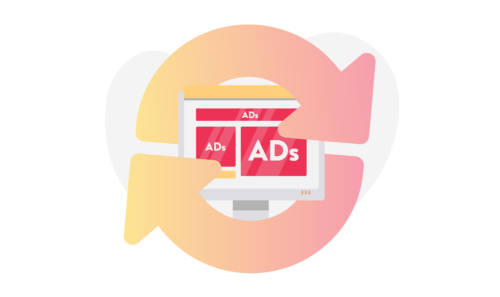5 Essential Performance Metrics for the Digital Publisher
In the early days, there were metrics for online Publishers such as unique visitors and pageviews, which, to a certain degree, were often coloured by editorial departments. This attention was warranted, however, particularly considering the focus being given to website traffic. However, the current landscape looks entirely different, as marketers are choosing to focus on measurable metrics that offer optimal performance.
Essential Performance Metrics for the Digital Publisher
1. Website Engagement
When it comes to modern-day Digital Marketing strategies, creating a positive user experience is key to attracting users interested in content and the served advertisements. The best optimising practice is to avoid a rising bounce rate. The following metric shows the percentage of users who have navigated away from the website after viewing only one page. If, after watching some ads, the user has remained on the landing page or surfing subpages, that means that the user is not annoyed by the number of ads and is interested in the content simultaneously. A high bounce rate may result in a low standing in the search since the search engines propel down unpopular web pages.
Therefore, Publishers need to track overall site engagement metrics on every web page containing an ad space. Moreover, Publishers who consider optimising the engagement rate of their sites are likely to become more valuable for direct Advertisers and media buying houses since there is a higher chance of catching a qualitative visitor who may increase brand recall for the ads on the page. Besides the bounce rate, the website engagement can also be measured with such metrics as unique site visitors, return visits to a website, time spent on a website, or dwell time.
2. Fill Rate
Fundamentally, the leading Publishers look to return all ad requests with an ad. But this can be pretty hard to achieve because Advertisers buy the ads which serve only the right audience at specific time slots. Thus, the Publishers’ fill rate is an important metric that helps to validate the market demand and understand how Publisher inventories are being fulfilled. The following metric is quite simple to calculate: it is the ratio of advertisements delivered to the number of ads requested by the ad server (ad requests).
Hence, in order to keep the fill rate at an optimal level, Publishers should focus on the eCPM. This metric unifies media effectiveness calculations and can be valuable when Publishers mix ad buys, such as cost per click, cost per lead, cost per action, etc. Keeping eCPM at a reasonable level and not letting it fall prevents the occurrence of a low fill rate. Also, the Publisher must track ad slots to spot unfulfilled ad requests.
3. rCPM
Nowadays, Digital Publishers focus on CPM as a critical metric in advertising success measurement. Without a doubt, it is an essential metric. Nonetheless, it cannot provide the Publisher with crucial information about website performance. And so, the rCPM indicator is vital for tracking the performance of Publishers’ demand. Plenty of Publishers do not take rCPM into consideration, which can lead to a bunch of unfulfilled impressions. Even though plenty of demand partners bid on the Publisher’s inventory simultaneously, the unfulfilled impressions can still appear for several reasons. For instance, the user can head out or move to another page while the advertisement is still loading. Consequently, paying attention to rCPM is crucial in order to track how much revenue is being lost, whereas traditional metrics such as CPM can mask the discrepancy.
4. RPM
Every marketer has heard about CPM. Nonetheless, RPM (Revenue Per Mille) has remained unfairly out of the spotlight. RPM can provide the Publisher with an overview of the website’s performance, showing the revenue gained per website visitor. To keep it at the appropriate level, the Publisher should consider working on such metrics as CTR (Click Through Rate), as it impacts RPM. The following closely intertwines with website engagement since visitors engaged in the content are less likely to leave the page and more likely to browse the Publisher’s content.

5. Viewability
The following metric is crucial since it helps Publishers to increase the value of their inventory. Still, it is tricky, even though the basic principle is quite simple, as viewable ads drive a better return of (marketing) investment. Like another Digital Advertising metric, viewability indicators may vary depending on the definition and measurement systems used. The IAB standard has become a market standard. For display ads, it should be at least 50% of pixels in view for at least one second on a desktop. As for the video, ads should be at least 50% of pixels in view for at least two seconds.
However, it has become increasingly popular for Advertisers and agencies to set their own viewability definitions; thereby increasing the requirements for viewable ad space or exposure time. By sticking with the viewability definition adopted by IAB, Publishers can still refer to the viewability benchmarks available on the market. As a result, Advertisers will be more attracted to Publishers’ inventory and eager to serve ads on Publisher ad slots. In addition, collecting statistics from the previous campaigns to compare the viewability of several ad slots is vital when it comes to meeting appropriate standards.







